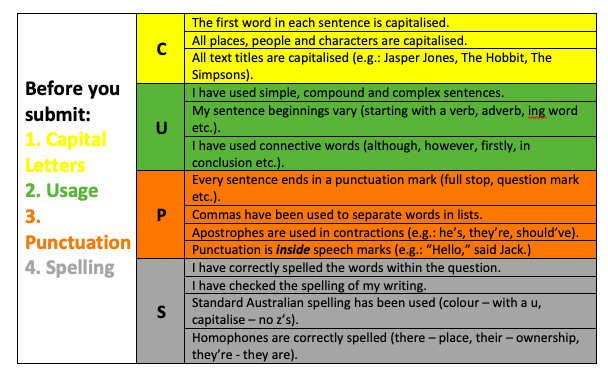The Situation
You want your students to collaborate and provide feedback to one another.
The Solution
Feedback is an essential part of the learning process. It is a moment of pause and reflection for the student. Sometimes, when focused on a task for a long period of time, it is difficult to identify the flaws. Reflection and feedback opens a dialogue for identifying areas of improvement. Students should develop a habit of scrutinising their own work through structured activities.
As much as you have all of the ideas and ways to improve their writing, your students do not always want to hear from you. Students need to hear feedback from different people.
Peer to Peer feedback allows students to collaborate and discuss ideas to improve their writing. Students care about he opinion of their peers and are likely to listen to their thoughts. This may not always be the case for you.
Using a Rubric
Provide students with a rubric or criteria that they can use to analyse their partners work. This could simply be the assessment outline or even a checklist. A checklist that I used below was for a study on the novel, Wonder. In this task, students had to write a paragraph about how August, the central character, is treated by other students. I broke down what students had to complete for each grade (On the left-hand side). Students worked with this rubric first before working with their shoulder partner to identify where they need to improve in their writing.

Alternatively, you can have students use a editing rubric to edit their own work and they shoulder partner also uses.

How to use a rubric with peer to peer feedback
- Assign Partner A and Partner B.
- Partner A reads Partner B’s work.
- Partner A identifies what Partner B is doing correctly, according to rubric. For example, “You have correctly used capital letters and used a variety of sentence structures.”
- Partner A identifies what Partner B needs to work on. For example, “To improve, you need to use more connective words such as ‘although’ and ‘however.’
- Reverse the roles and repeat.
After students have received the feedback, students need to process this information. They should develop an action plan for improvement. That is, what are their next steps. For example:
- I will include 2 more metaphors in my story.
- I will rewrite my opening sentence so that it hooks in my reader.
- I will modify the final sentence of my story to create a cliffhanger.
Start slow with students when introducing peer-to-peer feedback. This needs to be structured and students need to be stepped through the process. Once students have completed this a couple of times, you can pull back and allow students to use the rubrics more independently.
2 thoughts on “PEER TO PEER FEEDBACK”